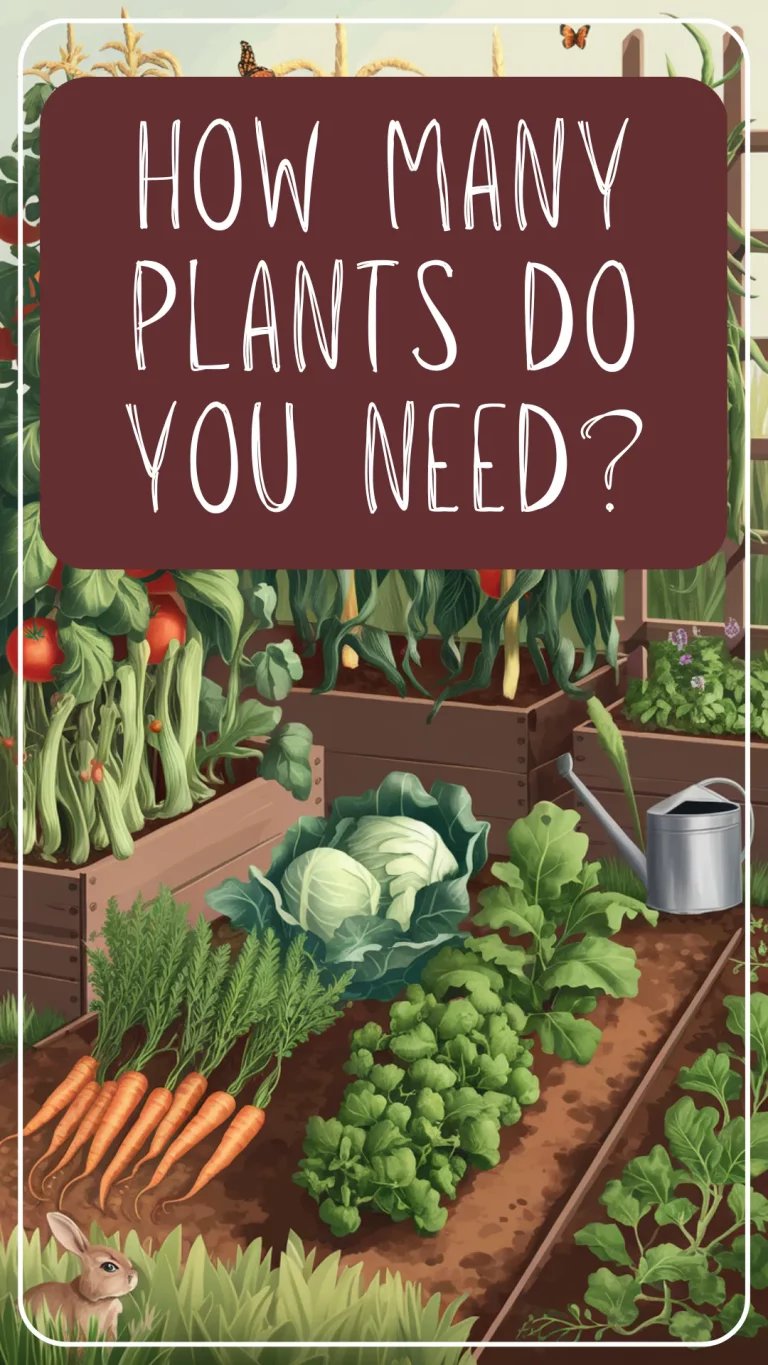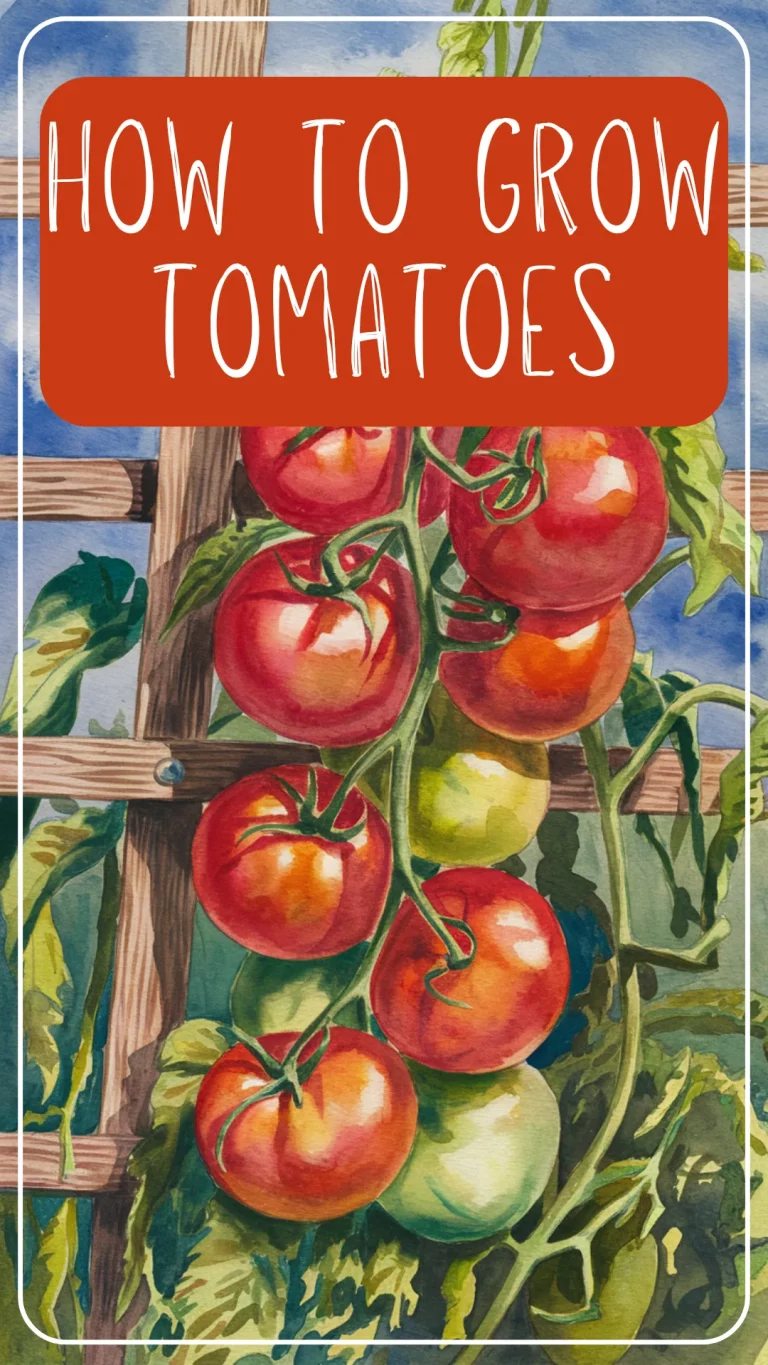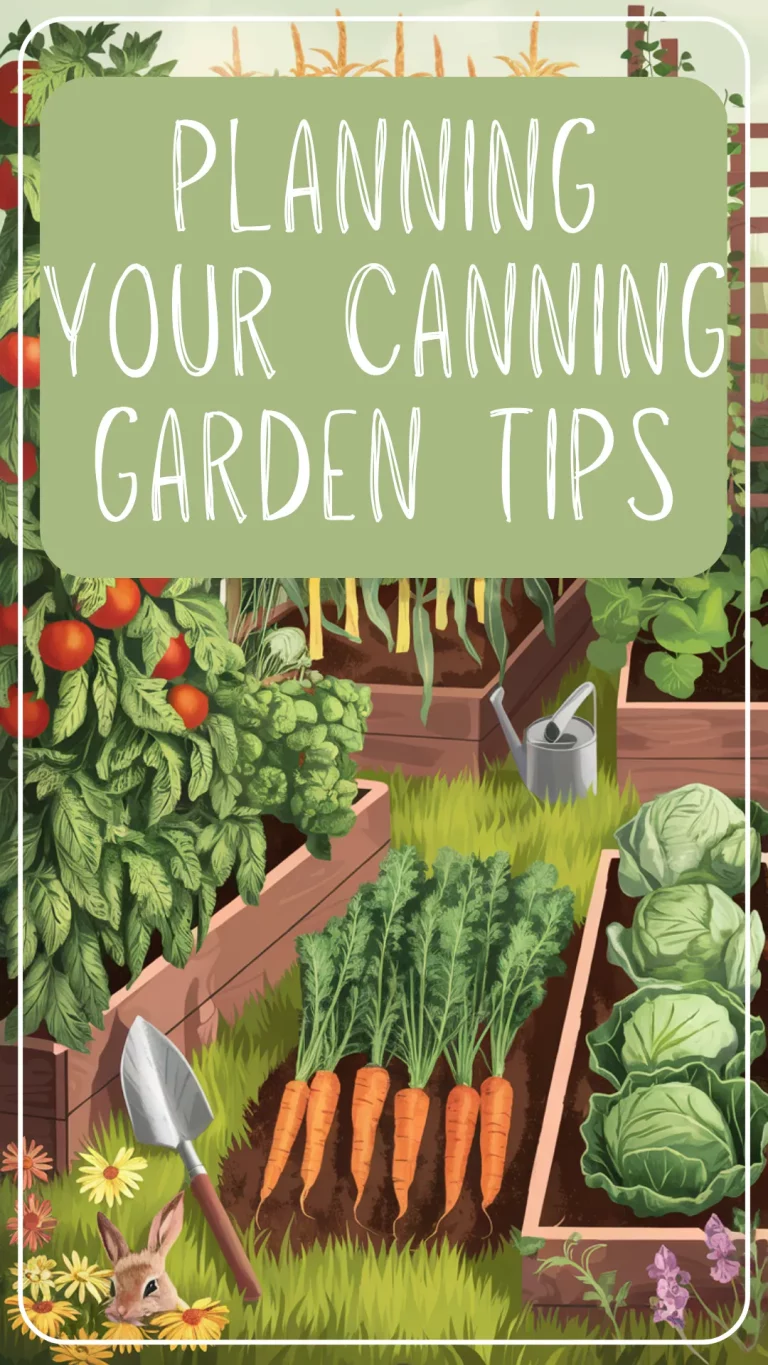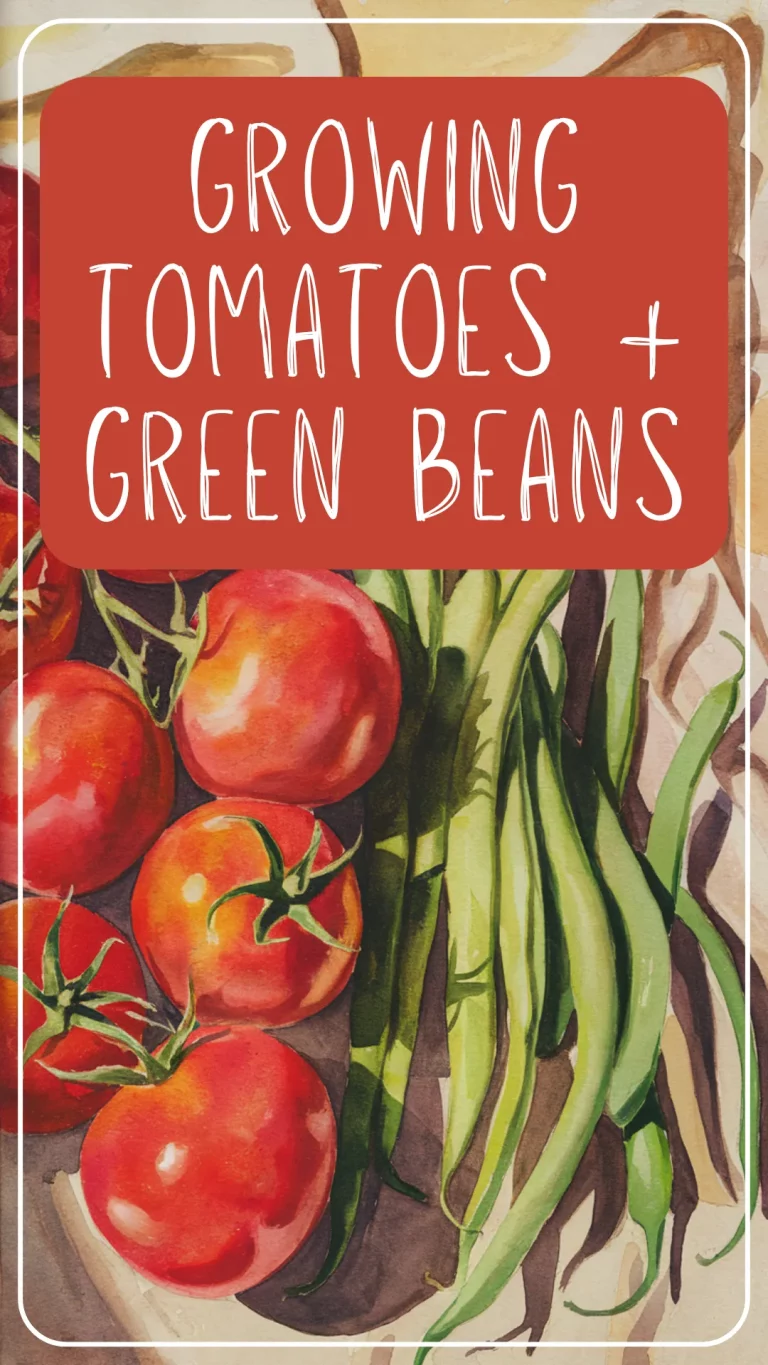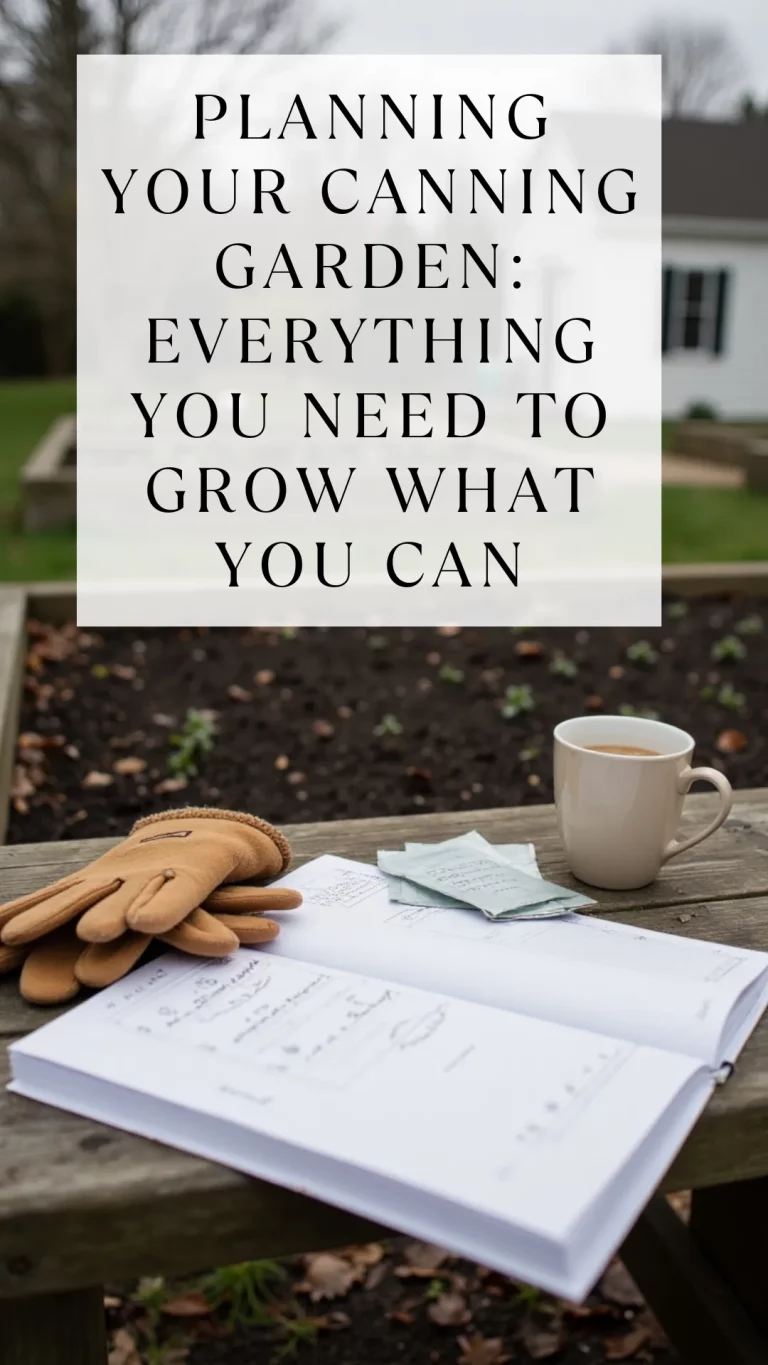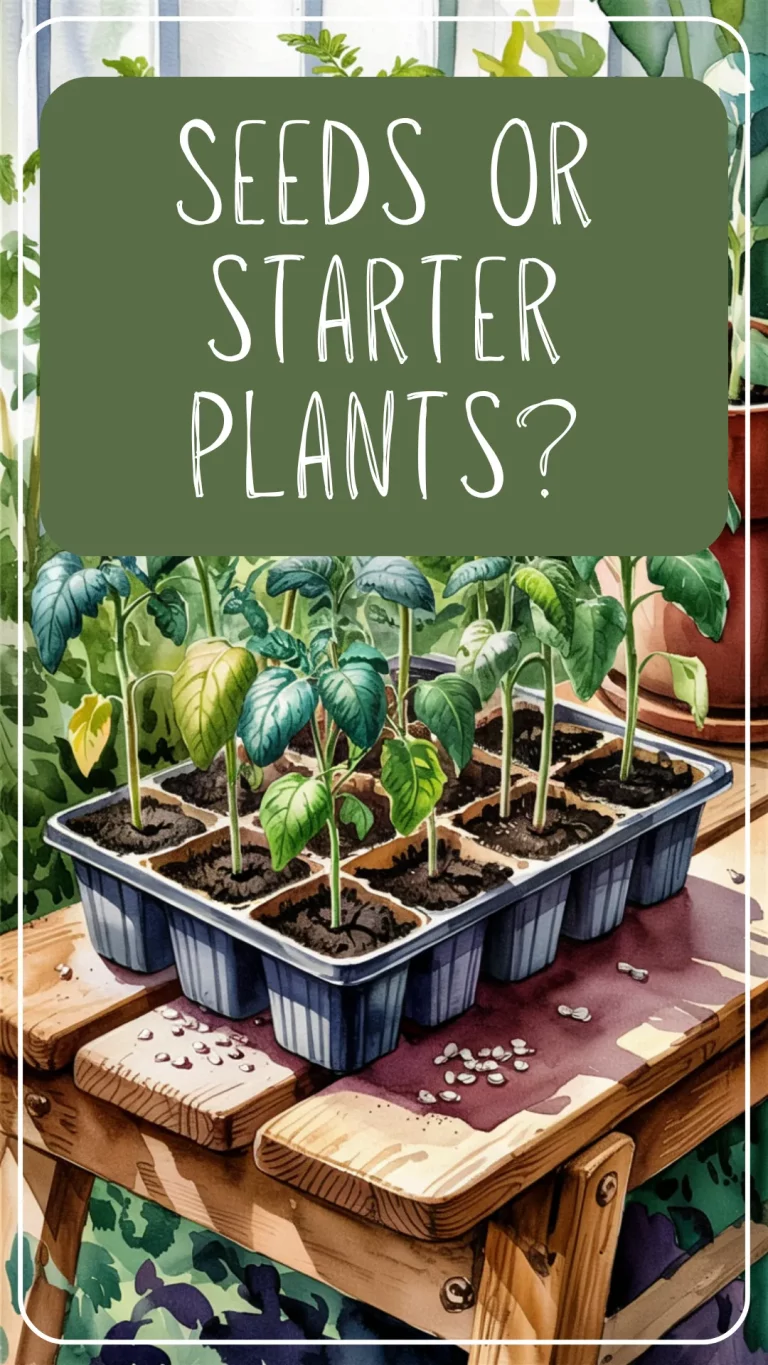Growing Food: What to Do When Everything Ripens at Once
Feeling overwhelmed by a sudden flood of tomatoes, beans, or zucchini? This beginner-friendly guide shares how to prep for canning days, store produce short-term, and preserve your harvest without the stress.
Inside this post:
How to Handle a Garden Glut
You’ve got tomatoes on the counter, beans in the sink, cucumbers in your kid’s lunchbox, and about six squash sitting on the porch because you’ve officially run out of room in the fridge. Welcome to the part of gardening no one really warns you about: the garden glut.
It always sneaks up on you. One week you’re cheering on your first tiny tomato, and the next, everything ripens all at once. And while it’s exciting (you grew all this!), it can also feel… a little bit like a crisis. Especially when you’ve got dinner to make, kids to wrangle, and canning supplies still in the basement.
If you’ve ever felt overwhelmed by your harvest, you’re not alone. The good news? There are simple ways to stay ahead of the chaos—or at least buy yourself a little breathing room.
This post is here to help you prep for those heavy-harvest days, preserve things quickly, and make the most of your hard-earned garden bounty—without burning out in the process.
What’s a Garden Glut? (And Why It’s Actually a Good Thing)
A garden glut is when everything seems to ripen at once—and your harvest goes from manageable to mountainous overnight. It might be tomatoes piling up on every flat surface, or green beans that need picking every 24 hours, or zucchini that somehow doubled in size while you slept.
At first, it feels like a problem. But here’s the truth: a glut means your garden is thriving. It means all your hard work—seed starting, watering, weeding—is paying off in the best way possible.
The tricky part isn’t that you have too much food. It’s that life doesn’t pause just because your cucumbers decided today was the day. Most of us are trying to squeeze in preserving around everything else, and a big harvest can feel like one more thing on a never-ending to-do list.
But a glut doesn’t have to lead to waste or burnout. With a few smart habits and a little prep, you can turn that flood of produce into something you’ll be grateful for all winter long.
Prep Ahead to Make Canning Days Easier
You can’t always predict when a glut is coming—but you can be a little more ready for it. Doing a bit of prep ahead of time makes those big harvest days feel less overwhelming and more like a rhythm you’re ready for.
A few things that make a big difference:
- Keep your canning area stocked and tidy.
Have clean jars, new lids, labels, towels, and tools in one place—so you’re not digging through drawers when the tomatoes are piling up. - Prep your workspace ahead of time.
Clear the counters, empty the compost bin, and maybe run the dishwasher the night before. Small things, but they help you hit the ground running. - Wash and sort produce as it comes in.
Even if you’re not canning right away, give things a rinse and separate them by type or ripeness. That way when you’re ready, you’re not starting from scratch. - Print or bookmark your go-to recipes.
No one wants to be elbow-deep in tomatoes while searching for “dilly bean brine” on their phone with sticky hands. - Block out time.
If you can, pencil in a canning day or evening once a week during harvest season. Even two hours on a Sunday afternoon can get a lot done.
This kind of prep doesn’t have to be fancy—it just helps you move from overwhelmed to okay, I’ve got this.
Fast Preservation Methods for When You Don’t Have Time
Sometimes the garden gives generously… right when you don’t have a single second to deal with it. The good news? You don’t have to can everything the moment it’s picked. There are plenty of ways to hit pause and deal with the harvest later—without letting it go to waste.
Here’s how to buy yourself time when life is full:
- Freeze it for later.
Tomatoes? Core and freeze whole. Green beans? Blanch, bag, and freeze. Peppers? Chop and freeze raw. You can always can or cook them later—frozen produce still makes great sauce, soup, or stew. - Make quick fridge pickles.
Cucumbers, onions, even zucchini can be tossed into a simple vinegar brine and stored in the fridge. They’re not shelf-stable, but they’ll keep for weeks and give you breathing room. - Dehydrate small batches.
Herbs, hot peppers, and fruit slices dry beautifully with minimal fuss. If you have a dehydrator (or even a low oven and some patience), it’s a low-labor option with great results. - Just refrigerate it.
If you know you’ll get to it in the next day or two, store your harvest in the fridge in open containers or paper bags. It won’t last forever, but it buys you a little time to catch up.
You don’t have to do it all today. The goal here is simple: keep the produce from spoiling so you can deal with it when your kitchen—and your brain—are ready.
Short-Term Storage Tips to Buy You Time
If your garden is outpacing your kitchen, storing your harvest properly—even for a few days—can make all the difference. Not everything needs to be canned the second you pick it. A little strategy can keep your produce fresh until you’re ready to tackle it.
Here’s how to make your harvest wait without spoiling:
- Tomatoes:
Store at room temperature, stem-side down, out of direct sunlight. Don’t refrigerate unless they’re overripe and you’re absolutely not canning today. - Cucumbers, green beans, and peppers:
Keep in the fridge in open produce bags or containers lined with a paper towel. Don’t seal them in plastic—they’ll go slimy fast. - Zucchini and summer squash:
Store in a cool spot (like a basement or garage) if you can. They’ll last a few days on the counter but bruise easily. - Apples, pears, root vegetables:
A cardboard box or shallow basket in a cool, dark room works well. Just check for any soft spots and keep them spread out. - Herbs:
Keep them in a jar of water on the counter, like a bouquet. Change the water daily and trim the stems. Basil especially hates the cold. - Don’t stack produce too deep.
Even the prettiest harvest turns to mush if it’s squished in a pile. Spread things out in trays or shallow bins if you can.
The goal here isn’t long-term storage—it’s keeping things from going bad before you get to them. Even a couple of extra days can make canning feel manageable again.
Simple Strategies to Avoid Future Gluts
You don’t need to overhaul your whole garden plan—but if you’re tired of the mid-August overwhelm, a few small tweaks can help spread the harvest out and make next year a little smoother.
Here’s what seasoned gardeners do (usually after learning the hard way):
- Succession plant.
Instead of planting all your beans, lettuce, or greens at once, sow a few rows every couple of weeks. That way everything doesn’t mature at the same time—and you get a longer, steadier harvest. - Stagger your seed starts.
If you’re starting tomatoes or peppers indoors, try starting half a few weeks before the rest. A little delay now can save your sanity later. - Plant fewer high-yield crops.
Do you really need six zucchini plants? Or twelve cherry tomato starts? (Spoiler: probably not.) One or two healthy plants will often give you more than enough. - Keep a garden journal.
Jot down what overwhelmed you this season—”too many cucumbers,” “green beans all ready at once,” etc. Next spring, you’ll be glad to have a little reminder. - Grow with your pantry in mind.
Ask yourself, “What do I actually want to can and eat?” Focus on those crops, and scale back on the ones you end up giving away (or googling what to do with… again).
Even with the best planning, gluts still happen—but they don’t have to be stressful. A little strategy goes a long way in turning chaos into confidence.
You’ve Got This
Garden gluts can feel like too much—too much food, too much mess, too much to do all at once. But they’re also a sign of something going wonderfully right. You grew food. More than enough. And that’s something to be proud of.
Whether you freeze it, can it, dry it, or just tuck it into the fridge until you catch your breath, know that every jar, every saved batch, every chopped tomato is a little piece of that effort tucked away for later.
So take a deep breath. Clear a counter. And remember—you don’t have to deal with it all today. But you can handle it, one basket at a time.
What to Read Next
Got a basket full of produce and no idea where to start? These posts will help you turn that garden glut into jars on the shelf—and give you a little peace of mind in the process:
Grow a Canning Garden You’ll Actually Use – Recipe-Based Planning for a Self Sufficient Garden
Tired of planting too much of the wrong thing? This post helps you plan your garden around the meals and preserves you actually want to make—so nothing goes to waste.
The Canning Garden Calendar – Month-by-Month Guide for Planning, Planting, and Harvesting
If this year’s harvest caught you off guard, this calendar will help you feel more prepared next time. Includes a free printable you can use to stay on track all season long.
How to Store Home Canned Food – Shelf Life, Temperature & Labeling Tips
Once you’ve put all that food in jars, this guide shows you how to store it safely and keep everything organized until you’re ready to enjoy it.

